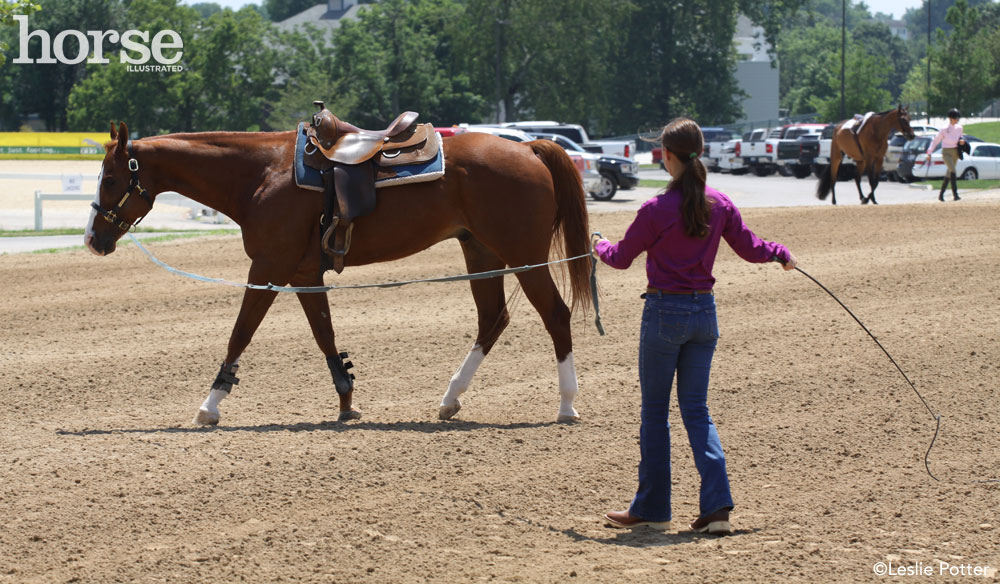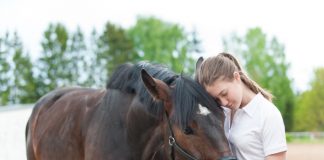It’s a common equine exercise that many horses and handlers perform, but nobody agrees on how to spell it! We’re talking, of course, about longeing—or lungeing, if you prefer. No matter which spelling you choose (“let’s call the whole thing off!”), there’s no question that longeing is an excellent way to prepare a horse for work, to exercise a horse that won’t be ridden that day, to condition a horse, to refine its obedience to voice commands, and many other benefits. But as common as longeing is, some precautions should still be taken to protect you and your horse. Here are a couple of tips:

1. Dress for the job
Make sure your horse is outfitted for longeing, too >>
2. Keep your circle large enough
Make sure you longe in a circle that is a safe size for your horse. Longeing in a circle that is too small forces your horse to constantly turn tightly, which puts a lot of stress and strain on his legs, muscles, and tendons. To avoid this, always longe your horse at a distance of at least 30 feet from you, in order to create a circle that is 60 feet (approximately 20 meters) in diameter. Some horses try to get lazy after a while and may attempt to “cut corners” the same way they do in the arena. Don’t let him get into the habit—make sure he stays at the proper distance. Even when using a properly sized circle, longeing can still be a strenuous exercise, so you won’t want to longe a very young horse whose legs are still developing.
3. Watch out for spunk!
One purpose for longeing a horse is to get him physically and mentally ready for more serious work—it can be a great way to burn off some excess energy. This means that you should always be on the lookout for the occasional buck, kick, or other rambunctious behavior. Be especially on guard if you’re longeing out in the open at a show—the combination of a show environment and a change of scenery may make your horse more excitable about being longed.
4. Use a proper longe whip
A small amount of encouragement is often needed to keep a longeing horse moving forward. Don’t use a dressage whip or other inappropriate whip for longeing—you may become inclined to get too close to your horse or you may accidentally shorten the size of your circle. Always use a long whip intended for longeing.
5. Handle the line properly
Don’t let the longeline lay in a tangle at your feet, just waiting to be tripped over. Know how to hold line properly and safely before you attempt any longeing.
Do you longe your horse often? What is your goal in longeing?
Daniel Johnson is a freelance writer and professional photographer. He’s the author of several books, including How to Raise Horses: Everything You Need to Know, (Voyageur Press, 2014). Dan’s barn is home to Summer, a Welsh/TB cross, Orion, a Welsh Cob, and Mati and Amos, two Welsh Mountain Ponies. Follow him at www.facebook.com/foxhillphoto.






My horse is extremely spooky.I started lunging him in our round pen but I am wondering if he gets dizzy. I havent measured the pen yet. But even in a open arena on the line, do horses get dizzy jogging around?